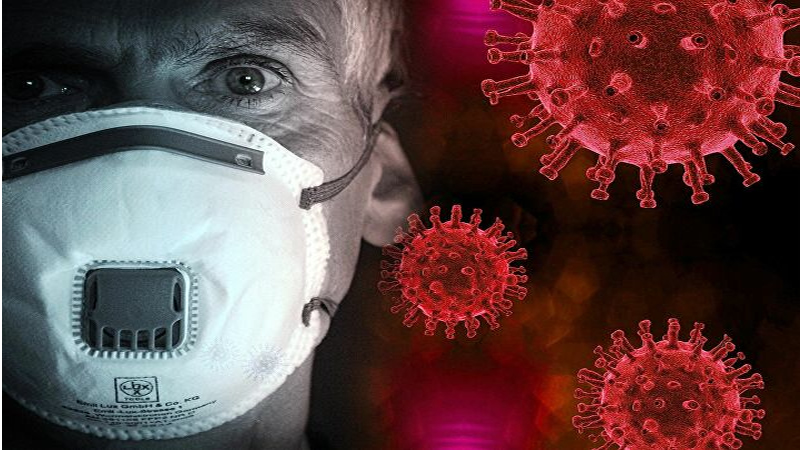The World Health Organization is keeping an eye on a novel COVID variety that appears to be creating a new symptom in kids that is seldom brought on by other Omicron spawns. At a time when reported cases are declining throughout most of the rest of the world, XBB.1.16, also known as “Arcturus,” is driving a fresh uptick in cases in India.
The BBC stated on Monday that the nation’s health ministry is conducting mock drills to make sure hospitals are ready for an increase in COVID cases. It also noted that several states have once more made mask use in public a requirement. Together with other countries, levels of variation are also increasing in the U.S., Singapore, and Australia.
But, XBB.1.16 might not be your typical Omicron. Juvenile instances of COVID are increasing for the first time in six months, according to Dr. Vipin Vashishtha, an Indian doctor and former chair of the Indian Academy of Pediatrics Committee on Immunization, who tweeted on Thursday that “an infantile phenotype is forming.”
The symptoms he’s now seeing among children:
- High fever
- Cough
- “Itchy” conjunctivitis—or pink eye—without pus, but with “sticky eyes”
The latter symptom hasn’t been seen in earlier COVID waves, he noted.
The Times of India reported on Monday that there are more COVID instances in children under 12 in India. Doctors caution parents of children with obesity, asthma, and other immunocompromised illnesses not to overlook the symptoms, even if they are often minor, and to seek care if necessary, according to the magazine.
Adenovirus, which has symptoms similar to COVID and can cause conjunctivitis, is also causing more hospitalizations of youngsters, according to experts, who told The Times that they were also noticing this trend.
Without testing, it is hard to differentiate between COVID and adenovirus.
According to Raj Rajnarayanan, assistant dean of research and associate professor at the New York University of Technology campus in Jonesboro, Arkansas, and a leading expert on COVID variant tracking, there are now “a number of anecdotal reports of pediatric conjunctivitis in India.”
Although he’s received similar accounts, infectious disease researcher Richard Reithinger of the nonprofit research organization RTI International tells Fortune that it’s “probably too early to say” if the virus’s symptom set has actually changed. He points out that although not frequently, conjunctivitis has been included as a COVID symptom in the past.
The virus was previously discovered in the tear film of the eye, a thin layer of fluid that covers the surface of the eye, by researchers at Nebraska Medicine’s Truhlsen Eye Institute. According to the institute’s blog post from November, conjunctivitis may result from the virus’s presence there.
According to the Truhlsen Eye Institute, symptoms of conjunctivitis include:
- Tearing, or watery eyes
- Redness
- Swelling
- Pain or irritation
- Itching
- Discharge
XBB.1.16 has ‘the oomph to outcompete’ other variants
Rajnarayanan expects to see XBB.1.16 and another new Omicron spawn, XBB.1.9, gain steam over the next few weeks, “if nothing else emerges.”
XBB.1.16 and its descendants have “the oomph to outcompete” other circulating COVID variants—“as of now,” he says, noting that new variants evolve quickly.
The XBB.1.16 family of variants “are the next big group” after Kraken variants, he notes.
When it comes to the pandemic, the world is currently in the “age of recombinants”—or existing variants that have combined with each other to potentially wreak more havoc—Ryan Gregory, a biology professor at the University of Guelph in Ontario, Canada, tells Fortune.
XBB.1.16 is a recombinant of two descendants of so-called “stealth Omicron” BA.2. A preprint study updated Sunday from scientists at the University of Tokyo suggests that it spreads about 1.17 to 1.27 times more efficiently than relatives XBB.1 and XBB.1.5, also known as “Kraken,” which currently dominates U.S. cases.
XBB.1.16’s increased ability to outpace other variants suggests that it “will spread worldwide in the near future,” researchers wrote, adding that the variant is “robustly resistant” to antibodies from a variety of COVID variants, including “stealth Omicron” BA.2 and BA.5, which surged globally last summer.
That means it could cause cases to rise again, even in areas that have recently seen increased COVID infections—especially if those infections stemmed from either BA.2, BA.5, or their descendants.
New variants may not always cause “waves” of cases anymore. That’s because a continual parade of new Omicron variants creates a baseline of infections that remains “unsustainably high,” Gregory says.
XBB.1.16 the most transmissible yet
The WHO declared XBB.1.16 a “variant under monitoring” in late March. It’s the most transmissible variant yet, Maria Van Kerkhove, COVID-19 technical lead for the WHO, said at a March 31 press conference.
Additional mutations in the virus’s spike protein, which attaches to and infects human cells, create the potential for it to infect more easily and even cause more severe disease. For this reason, and due to rising cases in the East, XBB.1.16 is considered “one to watch,” Van Kerkhove said at the time.
COVID hospitalizations and deaths have so far not risen in India, though both are referred to as “lagging indicators”—meaning that such developments, if they occur, usually happen several weeks after a rise in cases.
The variant still hasn’t been broken out in the U.S. by the CDC. On Friday, XBB.1.16 cases were still reported under XBB, which comprised just under 2% of U.S. cases. Cases must comprise at least 1% nationally before they’re reported in their own category.
But XBB.1.16 is clearly in the process of infiltrating the U.S. Nearly half of such sequences identified in the U.S. were identified via airport surveillance, Rajnarayanan notes, citing data from GISAID, an international research database that tracks changes in COVID and the flu virus.


